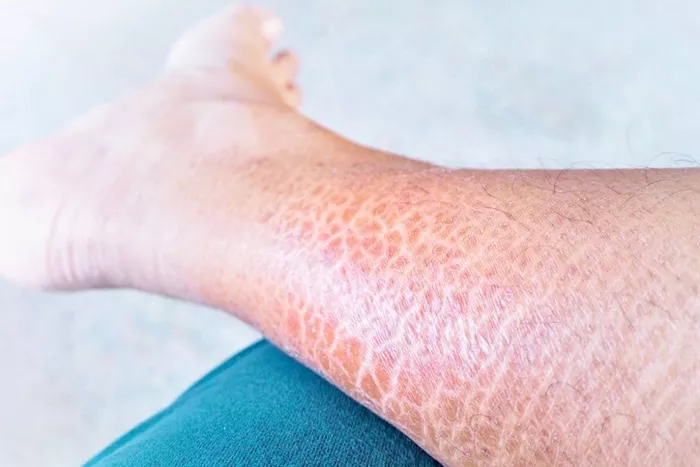For many people, the joy of owning a cat is overshadowed by the discomfort of allergic reactions, one of the most severe being wheezing. Wheezing related to cat allergies is a symptom that can significantly affect one’s quality of life, leading to difficulties in breathing and serious respiratory distress if not managed properly. This article delves into the causes of wheezing triggered by cat allergies and provides comprehensive strategies for prevention and management.
Understanding the Mechanism Behind Allergic Reactions to Cats
Allergens Explained
Cat allergies are predominantly triggered by proteins found in cat dander (dead skin cells), saliva, and urine. The most common allergen is Fel d 1, a protein present in cat saliva, which adheres to the fur during grooming and becomes airborne as dander. When these allergen-laden particles are inhaled by someone with a cat allergy, it can trigger an immune response.
Immune Response and Symptoms
When a sensitive individual inhales cat allergens, their immune system mistakenly identifies these proteins as harmful, triggering the production of antibodies. This immune response leads to the release of histamine and other chemicals, causing inflammation in the airways, nasal passages, and lungs, leading to symptoms such as sneezing, coughing, itchy eyes, and wheezing.
Why Wheezing Occurs
Wheezing specifically occurs when the bronchial tubes become inflamed and narrowed, and mucus production is increased, making breathing difficult. This whistling sound predominantly happens during exhalation and is indicative of obstructed airways.
Identifying and Diagnosing Cat Allergies
Symptom Recognition
Identifying the symptoms specific to cat allergies is crucial for diagnosis and treatment. Common symptoms include nasal congestion, sneezing, itchy eyes, skin rash, and wheezing. Noticing these symptoms soon after exposure to cats is a strong indicator of an allergy.
Professional Diagnosis
It is advisable to seek a professional diagnosis from an allergist. This may include a skin prick test or a blood test, which can confirm the presence of cat-specific antibodies, helping in crafting an effective management plan.
Management Strategies for Wheezing Due to Cat Allergies
Environmental Control
Reducing exposure to allergens is the first line of defense in managing wheezing due to cat allergies.
Pet-Free Zones: Establish areas, particularly bedrooms, where cats are not allowed to minimize allergen exposure where you spend the most time.
Regular Cleaning: Use high-efficiency particulate air (HEPA) filters in vacuum cleaners and air purifiers to capture fine particles of dander. Regularly clean carpets, upholstery, and curtains where dander accumulates.
Bathing Your Cat: Regularly washing your cat can reduce the level of airborne allergens. However, it’s essential to consult with a veterinarian to recommend a suitable frequency and shampoo.
Medical Treatments
Antihistamines: These medications help reduce the production of histamine, alleviating symptoms like sneezing and wheezing.
Inhaled Corticosteroids: These are often prescribed for long-term control of allergy-induced asthma and wheezing. They reduce inflammation in the airways, making breathing easier.
Bronchodilators: Used for quick relief, these medications help relax the muscles around the airways, opening them up and making it easier to breathe.
Lifestyle Modifications
Making lifestyle changes can also significantly impact the management of cat allergies.
Avoid Smoking: Smoke can exacerbate allergic reactions and symptoms like wheezing. Avoid smoking or being around smoke if you have allergies.
Healthy Indoor Air Quality: Maintain a low-humidity environment and use air purifiers to reduce allergen levels in the home.
Exercise: While exercise can sometimes trigger wheezing, maintaining fitness can improve lung capacity and overall health, reducing symptoms.
Immunotherapy: A Long-Term Solution
Allergy Shots
For those looking for a long-term solution, immunotherapy, commonly known as allergy shots, can be effective. This treatment involves regular injections of the allergen, in increasing doses, to build tolerance over time.
Sublingual Immunotherapy
A newer form of immunotherapy involves placing a tablet containing the allergen under the tongue daily. It’s a less invasive option compared to allergy shots and can be done at home.
The Role of Diet and Supplements in Managing Allergies
Anti-Inflammatory Foods
Incorporating anti-inflammatory foods such as omega-3 fatty acids, found in fish and flax seeds, can help reduce the severity of allergic reactions and support overall respiratory health.
Supplements
Vitamin C and quercetin can help reduce histamine levels, while probiotics may help modulate the immune system and reduce allergic reactions. However, it’s important to consult with a healthcare provider before starting any supplements.
Conclusion: Living with Cats Despite Allergies
Managing cat allergies symptoms like wheezing requires a combination of strategies involving environmental control, medical treatment, and lifestyle adjustments. With the right approach, many people with cat allergies can still enjoy the companionship of their pets without compromising their respiratory health. As each individual’s response to allergens can vary significantly, working closely with healthcare professionals to tailor a personal management plan is essential. This approach ensures that both the human and feline members of the household can live together comfortably and healthily.
[inline_related_posts title=”You Might Be Interested In” title_align=”left” style=”list” number=”6″ align=”none” ids=”8457,8453,8450″ by=”categories” orderby=”rand” order=”DESC” hide_thumb=”no” thumb_right=”no” views=”no” date=”yes” grid_columns=”2″ post_type=”” tax=””]

































